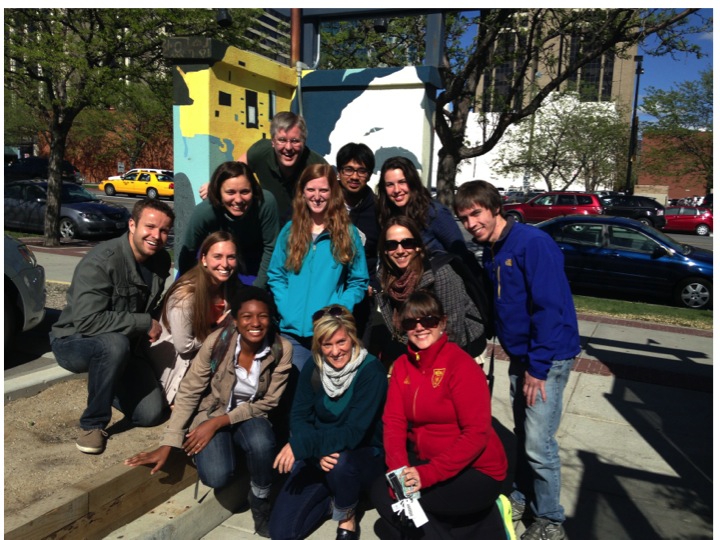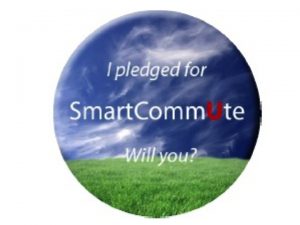Global Changes and Society 2014

In the Spring of 2014, the Global Changes and Society graduate students chose air quality for their interdisciplinary project.
Problem:
The Salt Lake Metropolitan Area currently experiences episodes of air quality out of attainment with the federal EPA standards for fine particulate matter. The leading contributor to PM 2.5 concentrations in the Salt Lake Valley is vehicle emissions, which account for over half of air pollution during the inversion that Salt Lake City faces each winter. Mobile sources such as single-occupancy vehicles are primary contributors to poor air quality in the Salt Lake Valley during inversions, constituting 57% of secondary PM2.5 emissions. Therefore, our air quality is greatly influenced by individual driving habits of valley residents.
Goal:
While the EPA and Clean Air Act rules and regulations promise to get the Salt Lake back into attainment by 2019, we believe that something better is possible. Many of the commuters in this valley are students or employees of the University. Thus by reducing emissions to and from this campus, we may be able to reduce a huge chunk of pollution that comes from vehicles.
Driving question:
The University of Utah campus community (students, faculty, staff, etc.) lacks adequate information regarding our personal impact on air quality and the resources at our disposal to help us reduce our impact. Would it be possible to provide more information to the campus community about impacts and resources? Can we begin to change the culture to embrace alternative transit? Behavioral changes to transportation habits at the individual/ level may be the most effective avenue to reduce particulate and ozone emissions, while also encouraging easy-to-practice sustainable living. The way to change the current situation is to change our own driving habits. However, old habits die hard, thus an effective transition from single-occupancy vehicles to mass transit and/or non-vehicular transit must provide easy to implement alternatives with benefits for the individual.
![]()
Project:
The SmartCommUte project aims to foster an informed University community and empower students, faculty, and staff to make commuting choices that will improve air quality in the Wasatch Front air shed. Our Global Changes and Society class wrote proposals for three projects, all of which were funded by the Sustainable Campus Initiative Fund SCIF):
 Goal: to help foster an informed and empowered University community that makes commuting choices that will improve local air quality.
Goal: to help foster an informed and empowered University community that makes commuting choices that will improve local air quality.
We created a guide that presents data about local air quality sources and solutions, including information about alternative transit both on and off campus.
Download PDF: Air Quality Literacy: A Guide to Problems and Solutions at the University of Utah.
One More Bike Today, One Less Car Tomorrow
 Goal: to promote a strong bike culture for students living on campus.
Goal: to promote a strong bike culture for students living on campus.
This program provides long-term bicycle rental (e.g, semester or academic year) to University students. We are particularly interested in providing this service to students who live in campus dorms. We have purchased ten Fuji Absolute 2.1 (8 speed-all-terrain) bicycles for this project, which is coordinated with the Bike to the U program.
Carpooling: Zimride
 Goal: to facilitate University community carpooling by partnering with proven experts.
Goal: to facilitate University community carpooling by partnering with proven experts.
Zimride is a social rideshare program with over 300,000 users and 100 university partners. Partnering Universities have averaged reductions of 300,000 lbs of CO2 emissions and $200,000 of vehicle operating costs.
We initiated a pilot project for University of Utah Zimride, a private network where University students and employees sign up for free with their UnID, while still maintaining privacy. The pilot was discontinued at the end of July, 2018. UU Commuter Services now has a page for sustainable transportation resources, including carpool/vanpool resources.
<–Back to Global Changes and Society projects, all years.
